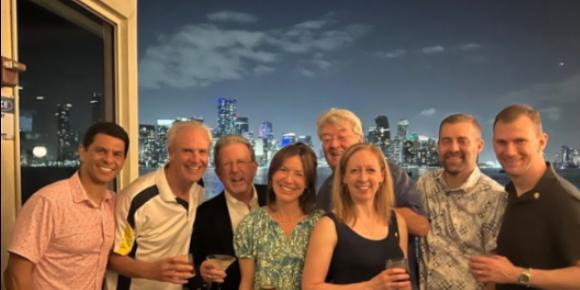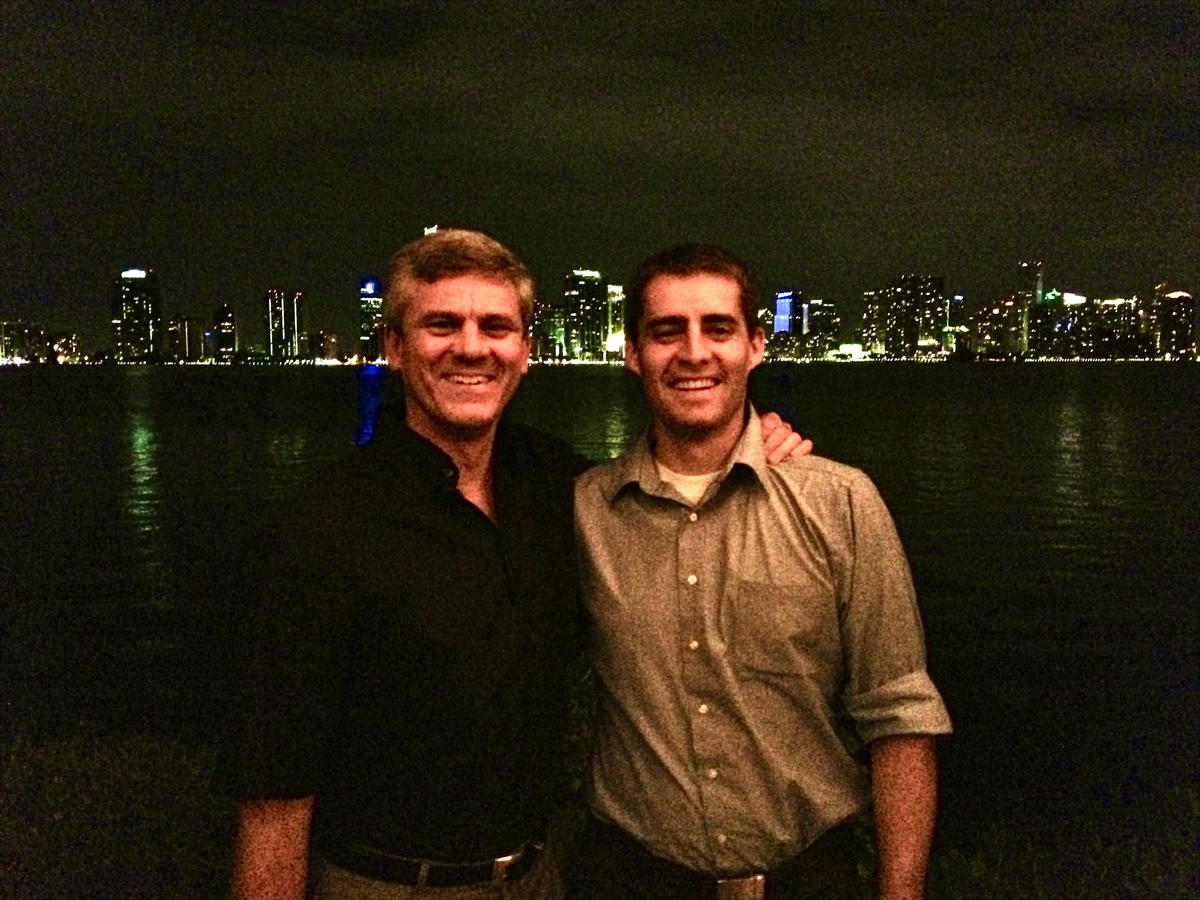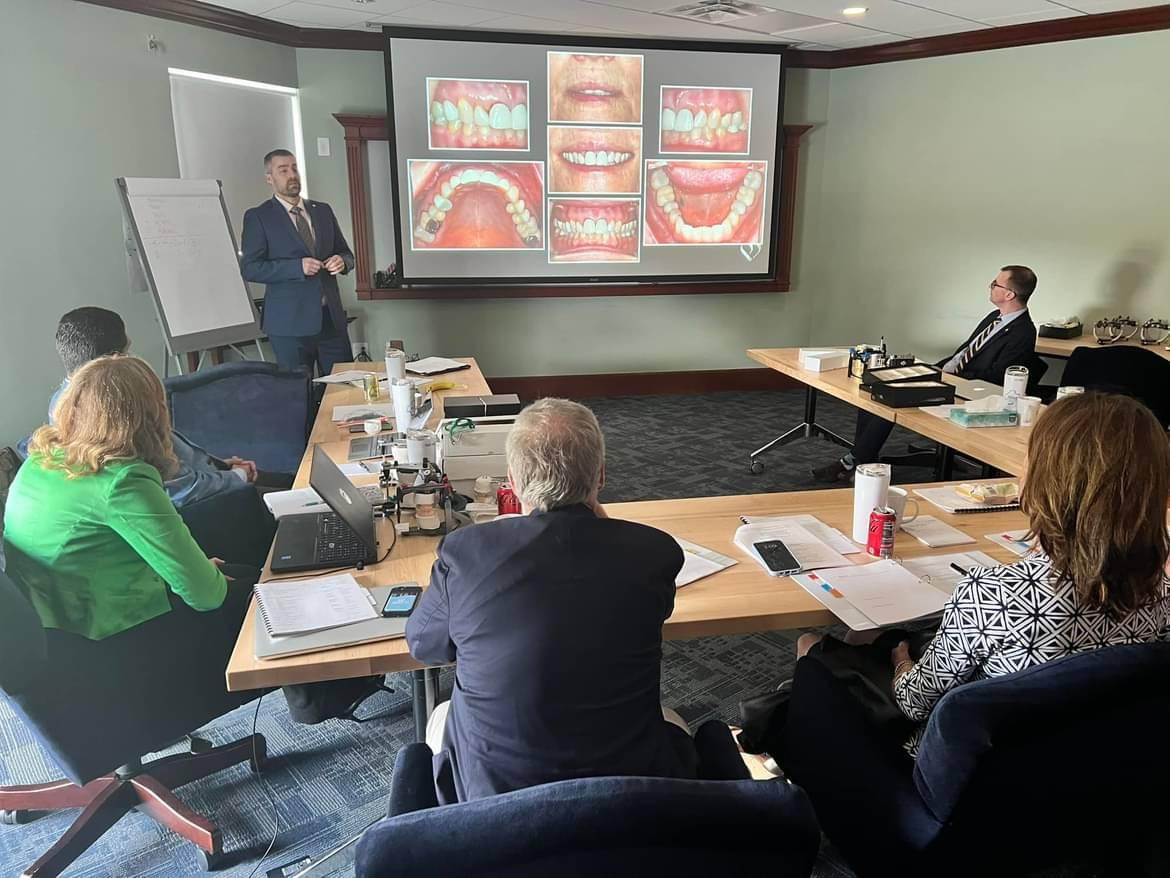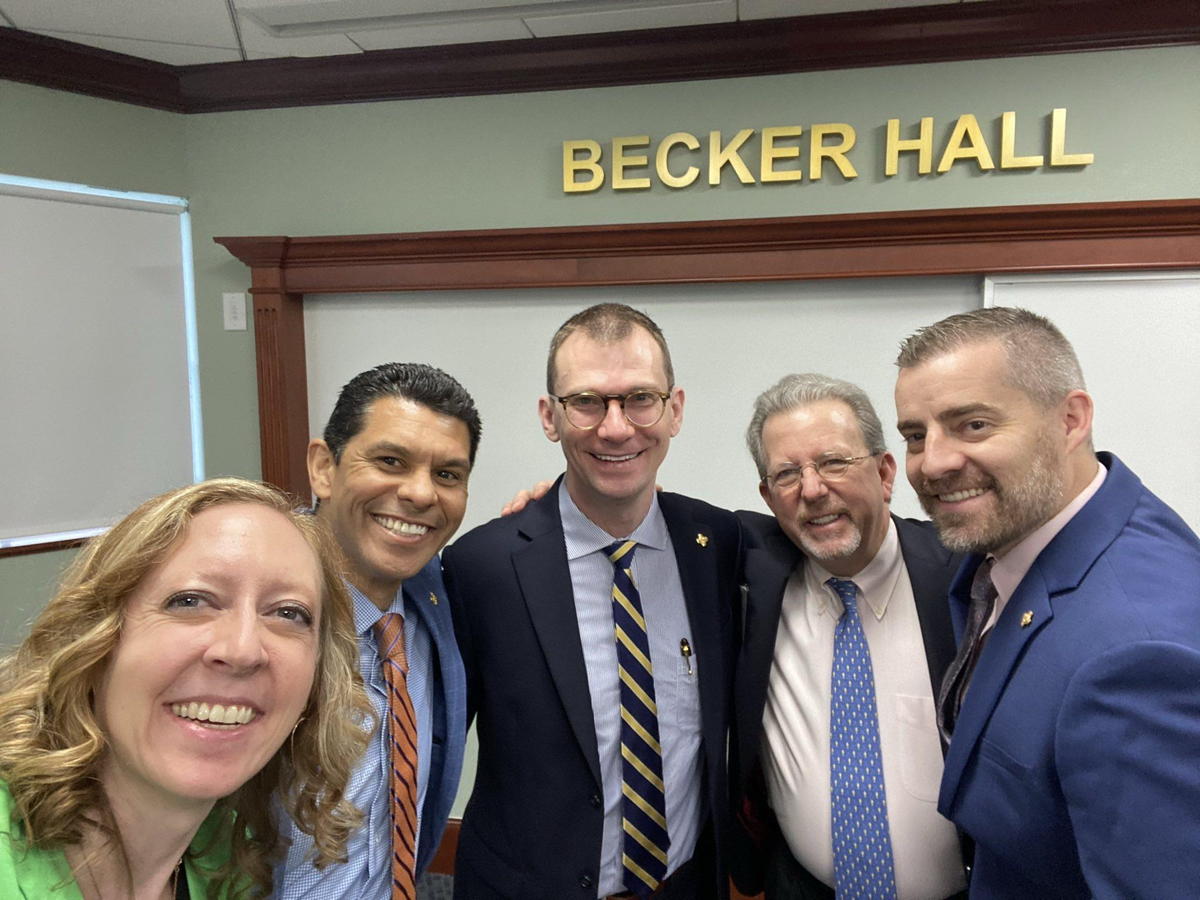
- posted: Feb. 09, 2024
I tell jokes. I tell jokes all the time. Sometimes, I even get people to laugh. I first noted and relished in the sensation of watching amused people laugh when my parents asked me to recite a liquid plumber commercial at a dinner with another family. In second grade I was given the role of the King in a Missoula Children’s Theatre production of Cinderella. The directors instructed me to do everything I could to make the audience laugh and gave me explicit instructions on how to do it. When I developed a modest ability to impersonate celebrities, I found another avenue to incite laughter. So, why do I tell jokes and do impressions? Because I enjoy watching people when they are amused and happy. Moreso, I have an innate need to be a part of influencing people to smile.
This desire doesn’t begin or end with amusing people. It begins with a compulsion to inspire people. I have benefited from learning to see the world from a perspective different from that given me by culture and upbringing. I find it rewarding to be a part of that paradigm shift for others, even in small ways.
Two and a half years out of dental school, I purchased my first dental practice from a retiring doctor. It was the only practice I’d worked in up to that point. It operated just like nearly every other practice I’d ever seen. It was profitable and busy. Despite the flow of cash, within six months, I realized I was sinking into depression, thinking I’d chosen the wrong career. There didn’t seem to be any hope aside from a dogged, Sisyphusean drudgery for the rest of my life.
I’d been a patient to three different dentists growing up with varied experiences in horror and pain. I’d been to several more as an adult. I’d worked during dental school in private and Indian Health Care practices. Despite their differences in place and people, they all operated in fundamentally the same way. They would encapsulate the antithesis of what I later came to understand from the renowned Dr. L.D. Pankey for whom the Pankey Institute in Florida derives its name. He said, “I’ve never seen a tooth walk into my office.” Every practice I’d seen seemed to see past people to their teeth. They neglected gum and joint health to satisfy insurance reimbursement and little more. They didn’t routinely try to understand the person who did walk into the office with the teeth. Dentistry failed often and patients were left wondering why because the doctor didn’t always understand either. Had I not had another experience with an alternative, I would have been without hope.
During our final year of dental school, my classmates and I listed to general dentists and all types of specialties speak at an early morning seminar class twice a week. This was also the year we would complete our required externships in private practice. This required us to spend two weeks in the office of a local dentist or specialist. Lucky for me, the first two weeks of the seminar class featured two dentists who I didn’t realize would change the course of my career. Dr Jeff Baggett of Edmond, Oklahoma and Dr Mike Fling of Oklahoma City. They each presented the complex work that they did in their practice and showed the fundamental differences that allowed them to predictably restore people’s teeth despite complex challenges. They understood that each tooth—which was the primary focus of other doctors—was a significant part of a greater system that included joints, muscles, gums, bone, and neurobiology. I’ll never forget the day Dr Fling showed us photos of the stone models of a patient‘s teeth. He paused to tell us, “I want you to notice the clean, polished stone of my model work. I haven’t doctored the models up to be in my presentation. My assistant does this to every set of models in our practice.”
This work was dental school drudgery. Despite our poor business management education In school, we knew that taking the time or paying someone to polish stone models wasn’t profitable. We also knew that we’d rarely be pouring up models of patient’s teeth. Most of us wouldn’t have a lab for such things in our office. Simply put: we all looked forward to NOT doing lab work in our offices once we graduated. Mounted models had value in making dentures. But to mount and polish them was three times the work of simply mounting them which few expected to ever do again after graduation. No office I’d been in even owned the device necessary—a semi-adjustable articulator. And none of us had ever seen or heard of a dentist paying attention to such details in “the real world.”. Classmates that had worked in private practice or had parents who were dentists had never seen anything like it.
At Dr Fling’s assertion, one classmate sitting near me on the back row leaned back in his chair and whispered down the row, “That’s bullshit.”
I chuckled, but I couldn’t bring myself to dismiss Dr Fling as a liar or a poser. So, in November, when we were asked to submit our requests for private externships, I put Dr Fling as my first choice. I was assigned to spend the first two weeks of January in his office.
Many of my classmates went to offices that used their burgeoning skills to place fillings. Some few were invited to perform root canals and crowns. When I walked into Dr Fling’s office, the first thing he said to me was, “Well, I don’t know why you want to be here. You’re not going to get to do much.”
I responded that I was grateful for the chance to see a different way to practice dentistry.
During my two weeks there, Oklahoma City experienced a significant snow storm that dampened normal traffic for a week. Dr Fling’s office was slower than normal. For me, it was a great opportunity to view world class dentistry done completely differently from any other practice I’d ever seen at a pace I could keep up with. The first thing I noticed was that Dr Fling never claimed to have all the answers. During a first exam with someone, they didn’t see the hygienist. Rather, he spent 90 minutes to 2 hours with each new patient. He spent time visiting with them, learning to understand their goals, expectations, and reservations. His assistant helped him obtain photographs of the patient‘s face and teeth. They took impressions of the patient’s mouth and three unique records of the patient’s jaw and tooth relationships. We did some of this in dental school, but not the photos or the centric relation (CR) record. We only knew the name of the CR record, not its significance or how to actually, reliably record one. He then spent a significant amount of time examining the joints and muscles of the head and neck. I’d NEVER seen this done. What was he trying to understand? Why were patients from California and Illinois making the trip to Oklahoma City for him to be their dentist? Why were bite splints such a big deal for his practice?
And, YUP! Every model was trimmed and polished. (Coincidentally, the classmate who called Dr Fling’s assertion “bullshit” was interning at a dental practice not far away. He came over to where I was with Dr Fling for an hour one day and remarked that, compared to Dr Fling’s commitment to excellence, what he was seeing for quality looked like someone putting “socks on a rooster”.)
Dr Fling routinely refused to make diagnoses when he didn’t have enough information. Where other dentists would glance at a mouth after a quick cleaning with a hygienist and declare every problem they saw—usually cavities and little more—Dr Fling practiced relationship-based dentistry. He needed to get to know a patient and their proclivities. He realized that occlusal disease (problems associated with the bite and function of the teeth) are often complex and that solutions need to consider the system so that the adaptation and harmony the patient experiences is not upset by treatment. Dr Fling races cars that he builds. He explained that if a tire is wearing in a funny way, simply replacing the tire seems like a necessary treatment. But the wear is only a symptom of the problem. If we put a new tire on the malfunctioning alignment system, the new tire will experience the same detrimental wear. Correcting the alignment was critical to alleviating the symptom. Thus, he was slow to diagnose. He examined muscles and joints. He evaluated wear with that CR record thingy. When he had a better understanding of the patient’s condition, he would sit and talk with them about it, sometimes for an hour, ensuring they understood and could make the decision that was best for them.
Dr Fling would be the first to admit that his work is not always perfect. Sometimes it failed. But failures were rare and he could easily explain why because he knew the environment in which he placed his work. He is a world renowned lecturer on treating worn dentition, among other things. That was why he used bite splints—to diagnose and to treat. A simple and critical method of understanding and trying out your plan to correct a complex system before putting new tires on broken teeth! I was impressed but too naive to really understand what I was seeing.
During one particularly slow snow day, Dr Fling (perhaps weary of a young dentist constantly in his shadow) handed me a book from his shelf: “The Exceptional Dental Practice: Why Good Enough Isn't Good Enough,” by Dr. M. William Lockard. “That’s the man I bought this practice from,” he said. “See what you think.”
So, I read. I didn’t have enough time to finish the book but I did read the first few chapters when the schedule permitted. Dr Lockard was an early, founding member of The Pankey Institute. He shared his story in the early chapters which I wouldn’t appreciate until I was two-and-a-half years into my own practice. He found himself in a busy practice being shuffled from one room to another by a team member who stood in the hall. One day, he went through his busy schedule when, at closing time, the mother of a young patient called the office. She asked the receptionist, “When are you going to put my son’s fillings in?” In the rush of the day, he’d numbed and drilled out decay but they had released the patient without having placed the fillings in the teeth! He recalls having them return that evening in which he placed the fillings, apologized, and sent them home never to see them again. Dr Lockard went home that evening to tell his wife that something had to change or he wasn’t going to make it. He was in the wrong profession. He experienced no fulfillment and way too much stress.
Dr Lockard came into the office while I was there. Cowboy hat and boots and a huge smile. He recounted visiting an office in town that asked him to offer his advice on how they could improve. His advice wasn’t well-received and he felt the office wanted validation, not and honest evaluation on how to improve. The first thing he asked me was when was I planning to attend the Pankey Institute? I was in my final semester of dental school and didn’t have the money to pay for the fees and travel expenses. Honestly, I didn’t know anything about it other than that Dr Baggett, Dr Fling, and Dr Lockard were associated. Our school’s Chair of Restorative Dentistry was Dr James Kessler who, I also believed was closely associated with the institute. When Dr Lockard left, Dr Fling said, “If you want to go to the Institute for their first course, I can sponsor you. That would get you half off the normal price.” Money on my mind and $200k in debt already for school, I politely declined.
I think it was good for me to not go immediately to the institute. I wasn’t ready for what it had to offer. I knew that the finest dentistry I’d seen came from two dentists associated with it. I knew that the method of patient care I‘d seen in Dr Fling’s office was superior to anything else I’d seen. It’s hard to convince an idealist that they don’t know what they don’t know. So I went to work in an insurance heavy practice in Northwest Arkansas. The doctor I worked for was the best man I’ve ever known. If there’s a heaven and he’s not in it, I certainly don’t want to be a part of that place. When I took over, I had my ideals and suddenly a decent amount of money. But I wasn’t happy. I spent a great deal of time simply trying to manage high decay rates. I didn’t forget to place a filling, but I felt the same way I’d read about how Dr Lockard felt. I’d seen Dr Fling in action. I wondered if I could make a practice like that.
One of my concerns was wondering what to do when a filling or tooth or crown broke not long after placement. I knew I didn’t feel comfortable with esthetic dentistry. And I certainly had no idea how to restore a mouth full of heavy wear. By this time, Dr Kessler was the director of education at The Pankey Institute. I called him and asked him about taking their focus course in esthetics. He said, “You could do that, but we’ve designed our courses as a continuum that builds from one session to the next. We don’t even advise you to take them too quickly.“ The essence of it is what I would hear as I engaged session to session, don’t focus so much on the destination that you neglect the journey. The journey is what enables you to understand and appreciate the destination.
 Dr Baggett and I with the Miami Skyline
Dr Baggett and I with the Miami Skyline
During the summer of 2012, I made the best professional decision I ever made and attended the Pankey Institute for their first Essentials course. Coincidentally, Dr Baggett was my facilitator! Unlike all institutes in Dentistry for higher learning, only the Pankey Institute remains not for profit. The facilitators are volunteers who embody the motto of the institute: quid pro quo. They have received and so they give. This course focussed on what I’d seen in Dr Fling’s office: focussed on relationships with patients and fully understanding the system they use to eat, speak, and laugh. It was transformative and gave me a vision and of what I could be and the skills I needed to make it happen.
In an insurance-dependent, blue-collar population I struggled to implement the lessons I’d learned. People learn to expect a certain thing from an office and we were suddenly trying to change that expectation. Two-years later, I returned to Pankey for Essentials 2. I learned how to use splints to effectively treat and diagnose most patients joint and occlusal (bite) disorders. Still, I struggled to implement. In addition, two days after I returned from this course, I ruptured a disc in my lower back and nearly lost my practice as I struggled to recover and return to work after surgery. After another two year interval, I returned for Essentials 3 with none other than Dr Fling as one of my facilitators. I learned hard lessons along the way about myself more than anything. Suffice it to say, my wife and I decided to move to Colorado in 2017. I finished the Essentials with their fourth installment, just before we moved. A few months after we established in Boulder, I participated in Pankey’s esthetics course. I‘ve returned often for other courses and was invited to join the faculty in 2021. Just this January, I completed a rigorous, 18 month program with four other dentists to earn the distinction of Pankey Scholar. We must showcase our complex dental work, practice philosophy, and personal journey with fellow participants and four discerning Scholars who evaluate our work and challenge our decisions.
 Presenting a case for the Scholar Program
Presenting a case for the Scholar Program
 Pankey Scholar Cohort 13
Pankey Scholar Cohort 13
I would not have been prepared for Pankey as a dental student when Dr Fling offered to help send me. In fact, I may never have returned. Everything that happened was timed in painful but rewarding ways which prepared me to take from the Pankey experience what I needed. I knew many aspects of dentistRoy with which I struggled and was peripherally aware that there was a great deal of which I was ignorant. I was a glass drained empty by mundanity, fatigue, and second-guessing. As Bruce Lee observed, the cup is useful to the extent to which it is empty. Having failed, I was ready to be filled. I‘ve become more comfortable in not having all the answers but knowing I can find them. That is to say, I’ve embraced the journey rather than pining for the destination. This is the perspective that enlivens the mind and makes fulfillment less fleeting.
I still ask myself why I’m doing this career? Nothing I’ve said so far truly answers the question: “Why am I a dentist?” That explanation is complex and deals with perceived cultural, familial, and sacerdotal influence. Nevertheless, I find myself as a dentist in amazing Boulder, Colorado. The bigger question is “why do I remain a dentist”? It’s taken me some time to make up my mind, but in finding my motivation, my career has become more intrinsically rewarding. I want to inspire people to be their best self. I want to make people smile. I want to help them see things a little differently—seeing alignment problems rather than just tire wear. Dentistry allows me to be a part of people’s lives in meaningful, transformative ways. But I can no longer do it the way I did when I started In the profession in 2009. I have to build meaningful relationships with patients first and then properly understand the unique oral system the person brings in with them if I am to comprehensively help them and give my work the best chance at long-term success. Health. Function. Esthetics.
A person.
How can I do this with the day to day grind? I had no idea the toll being a dentist takes on the body and mind. I make no claim that dentistry is more taxing than any other profession. My back has already needed surgery and constant vigilance is a requirement to prolong what seems an inevitable, early retirement due to disability. I understand and empathize with those who suffer from chronic pain. I have to deal with the difficulty of being the provider of a service that is frightening and painful. Even with the best intentions, technique, and bedside manner, I can’t escape the fact that I inflict discomfort and fear on people every day to promote their overall well being. It messes with the mind and heart because I’ve never been able to distance myself from or inure myself with their stress.
Ultimately, I continue to improve my skills and expand my influence because people have cared about me when I needed it. They‘ve helped guide me through pain and distress to set my feet on better ground. Most are mentors who’ve put their arm around me at the Pankey Institute, using their clear, encouraging voices to chase out the grim, defeated, fearful voices nature and nurture had planted there during formative times. Their voices have chased away those others. The support of my spouse and children and friends who’ve had to learn to tolerate a philosopher/historian who makes his living as a dentist. And patients have come to my rescue by being kind and paying with gratitude.
In the end, I believe that one of the greatest powers we possess is in expressing genuine gratitude. As a recipient of meaningful mentorship, I feel compelled to give back what I’ve received. In this way, it grows. I do it by loving and being there for and with my children and wife. I do it by giving time to help other fledgling dentists as a facilitator at the institute. And I give my best to each patient who walks through my door, regardless of their oral condition. I don’t believe people respond as well to shame as they do to hope and gratitude. And, since I’ve never seen a tooth walk into my office, I focus on the person that does. After all, I really do love to be a part of making people smile.
Our Location
Hours of Operation
8:00 am - 5:00 pm
8:00 am - 6:00 pm
10:00 am - 6:00 pm
8:00 am - 3:00 pm
Closed
Closed
Closed
